Analysis of Methanol in Biodiesel by HT3 and Versa Headspace Sampling
Introduction
With the rising prices of fossil fuels, more emphasis is being put on renewable resources and green technologies. Alternative fuel sources, such as biodiesel, are becoming increasingly viable. B-100 biodiesel, an alternative fuel source, is manufactured through the transesterification of renewable oils with methanol, and must meet quality specifications specified in ASTM D6751-12 and EN14214. Specifically, EN14110 is the standardized test method for methanol content in Fat and Oil derivatives, specifically Fatty Acid Methyl Esters (FAMEs). FAMEs can be used as a source of pure biodiesel or as a blending component for domestic heating fuels and diesel based fuels.
This application note will demonstrate the versatility of the HT3 and Versa automated headspace vial samplers for determining methanol in biodiesel samples following the European Standard, EN 14110, Fat and oil derivatives – Fatty Acid Methyl Esters (FAME) – Determination of Methanol Content.
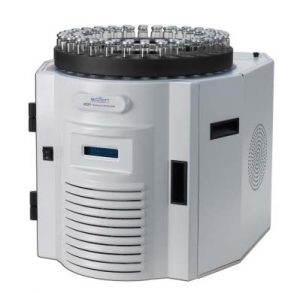
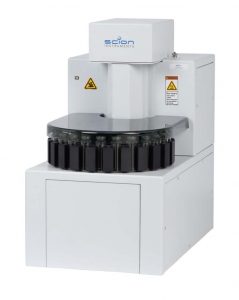
Figure 1. SCION Instruments HT3 Headspace Sampler (left) and SCION Instruments Versa Headspace Sampler (right)
Experimental
The HT3 and Versa headspace samplers were coupled with a GC/FID for the analysis of methanol in biodiesel. A sample of biodiesel was used as a reference FAME. Sample preparation on the biodiesel was performed to ensure that the concentration of methanol was 0.0005%, significantly low enough to not interfere with the calibration. This preparation is the FAME Reference Standard (FAME RS).
Three methanol calibration solutions were prepared at 0.01% (m/m), 0.1% (m/m) and 0.5% (m/m) using the FAME RS solution. Procedure B of the EN 14110 method was used. A sample containing methanol and 2-propanol was prepared. 20 sample headspace vials of unwashed biodiesel were analyzed to demonstrate repeatability and reproducibility, using both helium and nitrogen as carrier gas. Table 1 details the GC-FID method parameters. Tables 2 details the HT3 and Versa headspace sampler parameters.
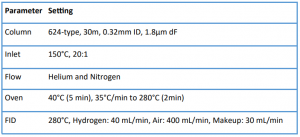
Table 1. GC method parameters
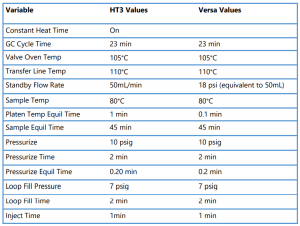
Table 2. HT3 and Versa method parameters
Results
The resolution between methanol and 2-propanol was also calculated. Figure 2 shows a chromatogram of a resolution solution.
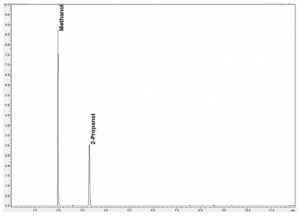
Figure 2. Chromatogram of Methanol/ 2-Propanol reference standard
The correlation coefficient (r2) and the coefficient of the variation of the three calibration standards were calculated for the HT3 and Versa, using both helium and nitrogen as carrier gas. The coefficient of variance of the calibration factor for methanol was evaluated to demonstrate the accuracy of the instruments without an internal standard. These values are listed in Table 3.

Table 3. Resolution and Calibration Data for Methanol in Biodiesel
Using either helium or nitrogen as carrier gas provides excellent resolution and linearity when using the HT3 and Versa headspace samplers.
The methanol peak areas of the 20 unwashed biodiesel samples were used to calculate repeatability (r) and reproducibility (R). The repeatability (r) value is used to determine if the absolute difference between two independent test results, using the same equipment on identical samples, passes the method requirement. The reproducibility (R) value from the method is used to determine if the absolute difference between two independent test results, using different equipment on identical samples, passes the method requirements.
The calculated mean values of the 20 samples were used to determine the maximum and minimum values following the method equations for r and R. The percent Relative Standard Deviation (%RSD) was also determined for the 20 samples. The r and R data was evaluated to determine if the 20 sample values fell within the method requirements.
Figure 3 shows the repeatability (r) data graphs for each instrument and its associated supply gas. Table 4 lists the %RSD and the repeatability and reproducibility values for the instruments, and their associated supply gases. Figure 4 shows the reproducibility (R) data graphs comparing the HT3 to the Versa with each supply gas.




Figure 3. Graphs of Repeatability Data (r) for the HT3 with Helium and Nitrogen and Versa with Helium and Nitrogen (top to bottom) for 20 Biodiesel Samples Including the Method Maximum and Minimum Ranges
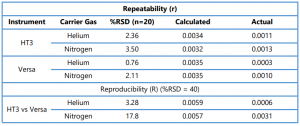
Table 4. Repeatability and Reproducibility Data for Biodiesel Methanol Assay Following EN 14110.
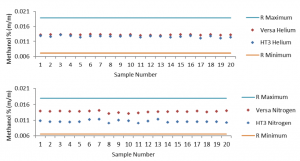
Figure 4. Graph of the Reproducibility Data (R) Comparing the HT3 and Versa % Methanol Value with Helium (Top) and Nitrogen (Bottom).
Conclusion
The identification of Methanol content, the crucial compound monitored in biodiesel fuels, will normally be determined using the headspace method EN 14110. Procedure B of this method uses an external standard and lends itself to the use of an automated headspace vial sampler. The HT3 and Versa automated headspace vial samplers successfully demonstrated their suitability to analyze methanol content in biodiesel.
The method resolution requirement was greatly exceeded, ranging from 24.3 to 24.7, using a 624-type column with either helium or nitrogen as the carrier gas and the supply gas for the HT3 and Versa. A temperature gradient GC method was used to clean off any possible interfering volatile compounds.
The method correlation coefficient requirement was also greatly exceeded (0.9999 or better), with either helium or nitrogen as the carrier gas and the supply gas for the HT3 and Versa. The %RSD values of the calibration (4.8 to 9.7) also surpassed the internal standard method requirement.
The repeatability values for the 20 biodiesel samples passed the method requirements using either helium or nitrogen as the carrier gas and the supply gas for the HT3 and Versa. This dependability, combined with the benefits of automation, and the ability to connect to most common GCs, makes the HT3 and Versa automated headspace vial samplers excellent choices when performing method EN 14110.
Download Application Note
Download the complete Application Note: Analysis of Methanol in Biodiesel by HT3 and Versa Headspace Sampling
Keep in Touch
If you wish to speak to a member of our team about more information, please don’t hesitate to contact us. Or if you wish to keep up to date with SCION Instruments latest research and articles, why not join us on social media and sign up to our newsletters today?
